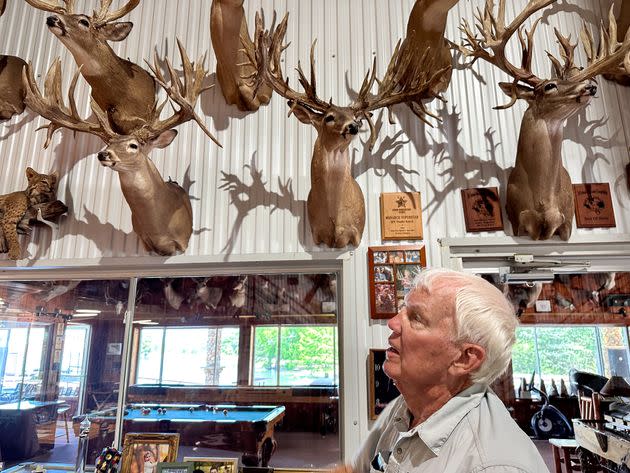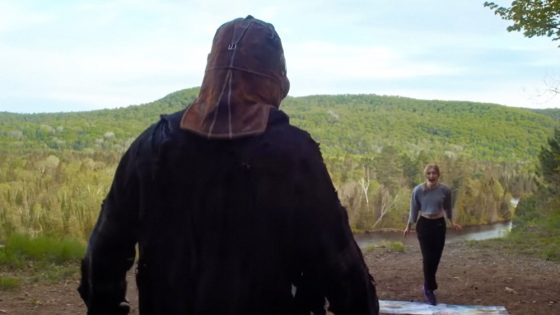Texas wildlife officials killed 249 captive deer on a private ranch this week, ending the longest-running challenge in recent years to the state’s policy of euthanizing breeder-cultivated deer herds infected with chronic wasting disease, or CWD.
The slaughter ends a three-year standoff with game rancher Robert Williams, 85. His tenacious legal challenges had raised the prospect that the deer breeders who supply the state’s high-fenced game ranches with big-antlered bucks might impede a strict euthanasia policy aimed at shielding wild deer from new CWD infections.

Like mad cow disease in cattle or scrapie in sheep, CWD causes brain proteins known as prions to misfold, leading to a prolonged death by neurodegeneration. Biologists widely view the spreading disease as the single greatest threat facing North America’s herds of wild cervids, a family that includes deer, elk, moose and caribou. The Centers for Disease Control and Prevention recommends against eating CWD-contaminated meat due to concerns that the disease could jump to humans, like mad cow did.
Texas wildlife officials generally kill all captive deer at sites where any deer tests positive for CWD, then require extensive sterilization procedures that include removing a layer of topsoil from deer pens and burying it six feet deep. CWD-contaminated sites cannot host captive deer for at least five years.
Williams, a CWD skeptic who eats infected venison without concern, waged a three-year legal battle to keep the state from killing the deer on his ranch southeast of Dallas, enlisting the support of Republican Texas state legislator Bob Hall and right-wing rocker Ted Nugent. Williams encouraged other breeders to follow suit. He implored Texas officials to let him release his bucks for wounded veterans to hunt for free.
The state’s ability to enter privately owned breeding pens to euthanize diseased deer is well established in Texas law, which regards the deer as wildlife and, therefore, public property. But a Kaufman County judge repeatedly granted restraining orders to avoid the slaughter, and ordered a trial to determine whether Williams had a property interest that could impede depopulation.
After months of legal wrangling, the Texas Supreme Court ruled last month that the depopulation could proceed, though the dispute with the Kaufman County court did not resolve until May 24.
“This is a task we never take lightly and that is always a last resort, but that has proven the most prudent and standard practice for managing prion diseases in wildlife,” the Texas Parks and Wildlife Department wrote in a statement.
The legal battle ultimately proved financially disastrous for Williams, who absorbed the cost of feeding approximately 500 captive deer that he could neither sell nor turn loose for paying hunters. The land’s value, which was tied to its attractiveness for deer hunting, has tumbled.
“I won some battles, but I lost the war,” Williams said. “They just ruined me.”


He and his daughter, Maree Lou, put down three deer themselves — including a tame doe that they viewed as a pet and allowed to enter the house — to avoid having wildlife officials shoot them.
Texas wildlife officials prohibited the Williams family from entering the breeder pens as the deer were euthanized on Tuesday, according to Williams. But he said they could hear the muffled sound of what he believed were subsonic pistol rounds firing repeatedly.
Texas wildlife officials dispatched most of the deer using suppressed centerfire rifles, according to an agency spokesperson. In three cases, they used pistols to dispatch individual deer.
“When I walked by and looked at those empty pens where those bucks used to be, I just cried,” Williams said. “I couldn’t help it.”
Wildlife conservationists, however, applauded the euthanization of Williams’ herd, viewing it as a necessary measure to protect native wildlife.
“Euthanizing those deer is very good for wild deer,” said Kip Adams, communications director for the National Deer Association. “We know CWD was on this place … The longer those deer are allowed to live, the more they have the opportunity to affect other deer.”
The state of Texas has struggled for the last three years to contain a CWD outbreak in deer-breeding facilities. Deer typically spread the disease to one another through body fluids like saliva.
Williams’ ranch is one of the first in a series of unexplained cases to crop up in breeder pens since the spring of 2021. Williams’ RW Trophy Ranch was located in a CWD-free county and had not sent or received any new deer for several years before the outbreak.
Captive deer represent a small but lucrative corner of the Texas hunting industry. Federal law generally classifies wildlife as a public resource administered by the states. Texas is one of about a dozen states that allow private citizens to breed deer, while classifying the animals as wildlife rather than livestock.
Breeders like Williams use selective breeding and high-protein feed to raise bucks with antlers far larger than those that deer typically grow in the wild. Breeders then sell those bucks to high-fenced game ranches that charge prices into the tens of thousands of dollars to shoot one.
The small size of breeder pens unnaturally concentrates deer, which can facilitate the spread of CWD once the disease appears. Over the time that Williams avoided depopulation, some 254 of the deer he bred tested positive for the disease, with a prevalence rate of 72%, according to Texas Parks and Wildlife.
The ranch’s pens held 637 deer at the time the first case of CWD was discovered in March 2021. The herd dwindled by more than half in the three years that followed — a rate of 2% per week, according to state officials.
The state is still waiting for test results showing how many of the 249 deer euthanized at RW Trophy Ranch this week had been infected with CWD, but wildlife officials expected many to test positive.
“During a May 14, 2024 inspection of the deer at the ranch, TPWD staff observed a number of deer displaying general signs of clinical CWD, including droopy ears and disorientation,” Texas Parks and Wildlife wrote in a statement. “One deer was visibly shaking and had tremors.”
Another 12 deer tested positive at release sites on or associated with RW Trophy Ranch, including at least one wild doe.
“Mortality surveillance results at RW Trophy Ranch show the devastating effect of an uncontrolled CWD outbreak in a breeding facility,” TPWD’s statement said.
Related…
Source Agencies



